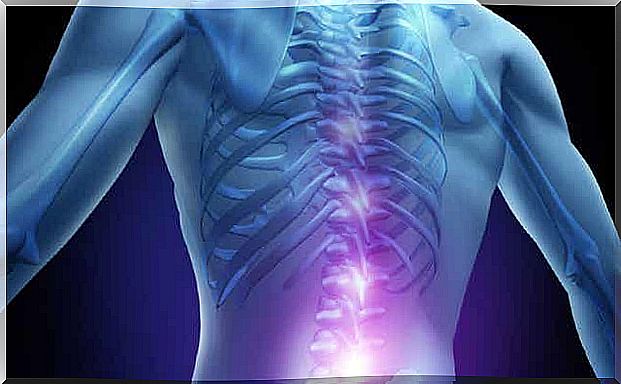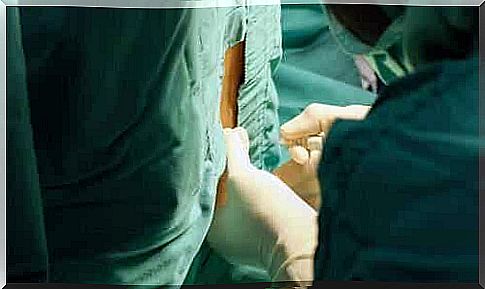Symptoms, Causes And Treatment Of Transverse Myelitis

Transverse myelitis is the inflammation of part of the spinal cord. It can have different causes and different symptoms. Here we tell you everything you need to know about the symptoms, causes and treatment of transverse myelitis.
What is transverse myelitis?
Transverse myelitis is the inflammation of part of the spinal cord. The inflammatory process causes the destruction of the myelin sheath, the protective layer that covers the neurons in this area. This interrupts nerve conduction, with consequences we will discuss later.
It is a relatively rare condition that affects several thousand people worldwide. Within this affected group, many of them are left with permanent changes that affect their daily lives, while others recover without consequences. Transverse myelitis can be acute, developing over hours or days, or chronic if it develops over weeks.
What are the causes of transverse myelitis?

The exact cause of this condition is not fully understood. However, it is believed that it is due to an abnormal response of our immune system that attacks the spinal cord tissue.
This immune response is related to other pathologies that can act as triggers. Some of the diseases that can trigger a disproportionate immune response include:
- Multiple sclerosis: This is the disease most closely related to transverse myelitis.
- Neuromyelitis optics.
- Diseases caused by a number of viruses and bacteria, such as tuberculosis, Lyme disease or syphilis.
- Different types of vasculitis, inflammation of the blood vessels.
- The use of certain medications.
Symptoms of Transverse Myelitis
As mentioned above, the symptoms can be acute or present in a progressive manner over several days. Normally the picture starts with severe back pain and a feeling of tightness along the affected area.
After this pain, a person often begins to notice tingling in the legs and feet and a feeling of numbness. There may also be increased sensitivity to touch and heat in some areas. It may be that someone urgently needs to go to the toilet.
As the condition progresses, these symptoms worsen. Paralysis resembling a spinal cord injury, loss of sensation, urinary retention, and loss of bladder and bowel control may result. The severity and duration of symptoms as well as the degree of disability it causes depend on the degree of inflammation and the area affected.
Diagnosis of transverse myelitis
The diagnosis is made by a specialist on the basis of history and physical examination. Although the symptoms may indicate this disease, the doctor will have to rule out other possible causes that cause a similar picture. Certain other investigations will therefore also be requested.
These additional tests may be imaging, such as magnetic resonance imaging, or analytical, such as a lumbar puncture. Once the result is confirmed, treatment will be started as soon as possible to minimize the consequences.
Treatment of transverse myelitis

The treatment of transverse myelitis will depend on the cause. The priority here is to treat the underlying disease.
- For example, if the myelitis is caused by tuberculosis, the treatment prescribed by the specialist will focus on this.
- The symptoms can also be treated with corticosteroids, or if no clear cause of the myelitis has been found (link is Spanish).
Another option may be plasmapheresis. This treatment consists of extracting a significant amount of the patient’s blood, removing the antibodies that attack the myelin, and reinjecting the blood without these antibodies.
As always , it is the physician in charge of treatment who will decide which treatment is most appropriate in each specific case of transverse myelitis and the underlying disease.
A long-term illness that can have long-term consequences
Thus, the prognosis of the disease depends on many factors. Recovery of both muscle activity and sensitivity usually begins between 2 and 12 weeks from the onset of symptoms. Recovery can be slow and can take years. If there is no improvement in the first 6 months, the patient may never fully recover.
A third of those affected will recover completely, another third will have more or less serious consequences and another third will not recover at all. As always, it’s important to remember that when a symptom occurs, you should see your doctor to evaluate the situation and determine the steps to take.









